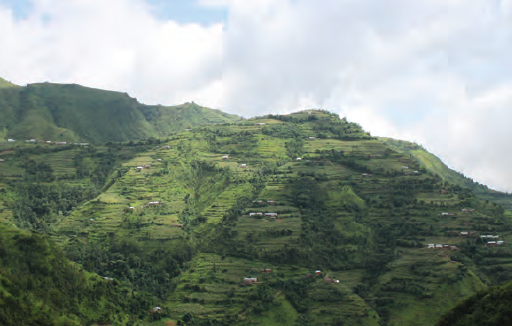Improving food security and addressing nutrition of vulnerable farming communities affected by conflict and natural disaster in mid-western Nepal
 Summary of Field Exchange 49 article by Guido Agostinucci
Summary of Field Exchange 49 article by Guido Agostinucci
Nepal is one of the poorest countries in Asia with high levels of food insecurity and the highest burden of stunting in the region; half of Nepalese children under five years are stunted (low height-for-age). The farming population of the mid-Western region of Nepal is particularly vulnerable to food insecurity due to reduced food production as a result of a decade of internal conflict (1996-2006), ethnic tensions, floods, landslides and three consecutive years of drought.
The Food and Agriculture Organisation of the United Nations (FAO) formulated a project to improve food security and nutritional status in this area, targeting the most vulnerable farming communities in five districts. Activities were carried out in collaboration with the relevant Government Departments, other UN agencies and NGOs from June 2008 to December 2009. Activities included: a) training and provision of cereal and vegetable seeds appropriate to local agro-conditions to increase crop production; b) provision of goats, training, veterinary equipment and shed construction materials to improve livestock production and c) nutrition education for programme participants and trainers.
A total of 15,768 households were supported by the project. Out of these, 14,173 households undertook crop production activities, 1,595 households were involved in livestock production, 8,670 families actively participated in nutrition trainings and 144 community health workers participated in training sessions on nutrition.
In terms of crop production, approximately 8,120 hectares of vegetables and cereal crops were planted. Compared to local varieties cultivated with traditional methods, average yield increases ranged between 10% and 25% while higher resistance to local pests and diseases were observed. Most farmers in the programme re-planted second generation crop seeds. In terms of livestock activities, on average, each participant was able to add between one and two goats to their flock after the first year of the project.
 Dietary diversification was supported by promoting the availability and consumption of vegetables and animal proteins; the number of vegetable species grown increased from an average of 3.7 prior to the project intervention, to 5.1 by the end of the project. The number of months for which participants consumed self-produced vegetables also increased, from 3.3 months to 4.3 months a year. There was an increase in the number of participating households reporting food self-sufficiency for more than six months of the year (from 19.2% to 33%). The increased number and availability of goats and goat products in the communities is assumed to have increased consumption of proteins from animal origin. The project also enhanced the nutritional knowledge of participants and increased awareness of nutritious and locally available food. Awareness was also raised of the links between nutrition and agriculture and emergency response with longer term programmes.
Dietary diversification was supported by promoting the availability and consumption of vegetables and animal proteins; the number of vegetable species grown increased from an average of 3.7 prior to the project intervention, to 5.1 by the end of the project. The number of months for which participants consumed self-produced vegetables also increased, from 3.3 months to 4.3 months a year. There was an increase in the number of participating households reporting food self-sufficiency for more than six months of the year (from 19.2% to 33%). The increased number and availability of goats and goat products in the communities is assumed to have increased consumption of proteins from animal origin. The project also enhanced the nutritional knowledge of participants and increased awareness of nutritious and locally available food. Awareness was also raised of the links between nutrition and agriculture and emergency response with longer term programmes.
Project activities were replicated and expanded to ten additional districts in a subsequent FAO project funded by the European Union and training materials produced by the project were utilised by the Department of Agriculture and Department of Livestock Services to train personnel.

